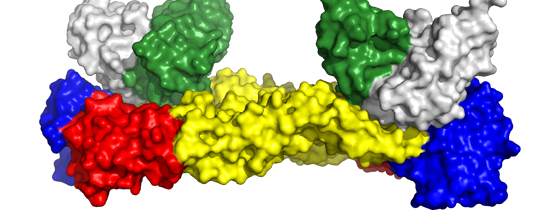The structure of an antibody in complex with the Zika virus envelope protein has been resolved thanks to data obtained on the PROXIMA-1 and PROXIMA-2A beamlines
Scientists from the Institut Pasteur, CNRS, the Imperial College (UK) and the Vienna University (Austria) showed that, among antibodies developed by patients infected with the dengue virus, some are also efficient to block the Zika virus (these viruses both belong to the Flavivirus genus).
In order to determine, at the atomic scale, the binding site antibody/virus, researchers succeeded in synthetizing crystals of the complex and then used three different European synchrotrons: SLS, ESRF and SOLEIL. The structures presented in the study (published in Nature on June 23, 2016) have all been resolved thanks to X-ray diffraction data collected on the PROXIMA-1 and PROXIMA-2A beamlines at SOLEIL. Regarding the PROXIMA-2A beamline, this represents the first structure (resolved from data collected with the EIGER 9M (Dectris) detector), to be published in a journal as prestigious as Nature. The EIGER 9M (Dectris) belongs to the last generation of high-frequency detectors; recently installed on the beamline, it has enable to collect such very high quality data.
These results suggest that it will be possible to develop a vaccine acting simultaneously against dengue and Zika viruses.

3D structure of the Zika virus envelope protein (red, yellow and blue) in complex with the neutralizing antibody (in green and white). © Institut Pasteur
